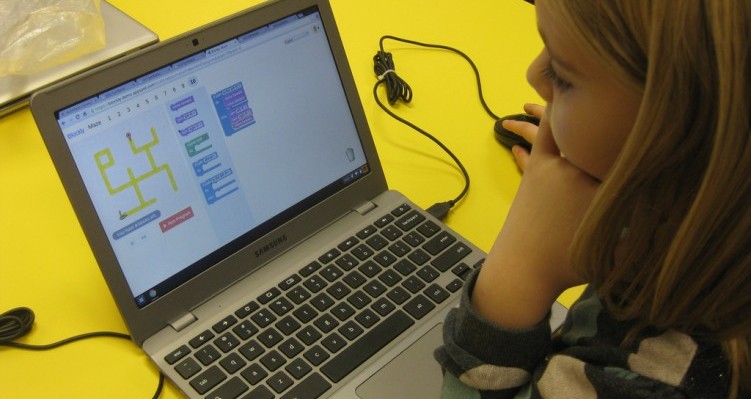The web is great for research, and it’s becoming an increasingly effective teaching tool. If you have a computer or mobile device in your home, you can seamlessly integrate blended learning into your instruction. Let’s look at what blended learning is, how you can implement it into your homeschool classroom, and why it’s such a great idea.
Blended Learning Defined
Blended learning combines traditional face-to-face instruction with online resources and tools. The University of Central Florida defines online resources as “replacing” some face-to-face instruction, but it could be viewed as enhancing traditional instruction. Blended learning doesn’t discard all traditional teaching methodologies; rather, it heightens students’ engagement, achievement, and learning.
Improves Focus and Excitement
Blended learning advocates say it can improve student focus and eagerness to learn. Book-based research is time consuming, and students often lose interest. The faster computer-based research and plethora of available information sustains student interest longer. When students are interested, they are excited. Hands-on online materials can also bring life to boring subjects.
Self-Paced, Self-Directed Learning
Students learn best according to their individual learning styles and pacing. Blended learning facilitates individualized, self-directed learning. Face-to-face instruction is available at a fixed time; online learning is always available. Students can’t rewind a face-to-face discussion, but they can rewind a video until they understand the concept.
Skills for a Modern World
Students quickly learn computer skills through blended learning. They also perform decision-making and communication tasks, such as collaboration and netiquette (network etiquette), which transfer well to the workplace and social situations.
Implementing Blended Learning Into Your Homeschool Classroom
Edutopia offers four methods for implementing blended learning into the classroom.
- Focus on One Grade Level: If you have multiple children, it will be less overwhelming to focus on one child at a time. Carefully choose the web resources you will present, making sure they are appropriate to the child’s learning abilities. Search websites such as K12.com for age-appropriate materials. After one child masters blending learning, start focusing on other children.
- Set Goals: It’s critical to not use web resources for the sake of using them. Think carefully about what you wish to accomplish. What curriculum elements could benefit from blended learning? Articulating your blended learning goals will make the lessons more meaningful and less haphazard.
- Determine What’s Best Presented Digitally: If a lesson works well face-to-face, keep it that way. If a lesson would present well digitally, use blended learning. If a child doesn’t engage with a certain subject, try online learning.
- Carefully Plan Your Resources and Access: If children outnumber the available computers and devices, stagger blended learning activities accordingly.
Advantages of Blended Learning for Homeschool Parents
For homeschool parents, blended learning offers freedom from knowing everything about every subject and from the frustrations of a child not understanding the material. There is likely a web resource available that can help your child learn. Blended learning also opens social networks to your child that they may not ordinarily be able to experience. Instead of learning about another country’s customs, why not engage in an online chat or virtual tour of that country?
In short, blended learning doesn’t replace face-to-face instruction; it enhances it. If you need help incorporating blended learning activities into your child’s curriculum, explore K12.com for resources.
Image via Flickr by kjarrett




































